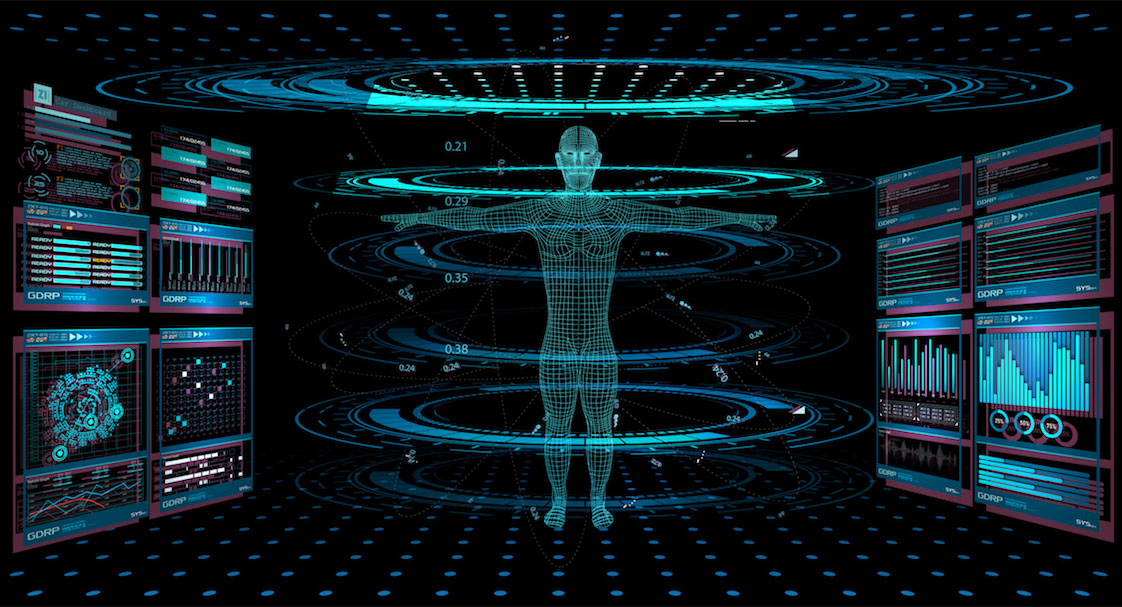One fear about artificial intelligence generated by computers is that it will replace humans, but a trio of radiologists with Hartford HealthCare welcomed recent headlines about the technology in mammogram reading rooms.
Google-funded researchers, in a study published in the journal Nature, asserted that AI could be more efficient than humans at spotting breast tumors on mammograms.
Dr. Diana James, section chief of breast imaging at Hartford Hospital, countered, calling AI another “tool” enhancing radiologists’ work. While she and colleagues, Drs. Stacy Spooner and Holley Dey, agreed that AI promises increased interpretive accuracy — improving sensitivity by 8 percent and specificity by 5 percent, per a separate 2019 study — and better patient care, they didn’t envision the technology functioning solo.
“It is not going to replace physicians any time soon. It’s good at making findings but not at coming to accurate conclusions,” Dr. James said. “But I love working with it because it’s like having a second radiologist with me.”
Dr. Spooner added they have been “using computer-aided detection (CAD), a form of AI, for decades to complement a radiologist’s interpretation of mammograms in the detection of cancers.” She also said screening mammograms don’t exist in isolation in the detection of breast disease.
“Along with them are diagnostic mammograms, breast ultrasound, breast MRI, breast biopsies and breast surgical planning,” she said. “These modalities all play a role in patient care, management and long-term survival. I think AI will make its initial impact in the role of diagnosis, but I don’t anticipate the ability to completely remove radiologists from patient care any time soon.”
What AI technology can do, Dr. James said, is add a layer of security to mammography. In the United States, mammograms are read by one radiologist, while two read them in Europe and Great Britain. There, however, mammograms are only conducted every two to three years due to a worldwide shortage of radiologists to read them. Adding AI to a radiologist, she explained, gives every patient’s test two readings.
Current versions of AI “find everything abnormal” on scans, including scars left by previous surgery and normal structures such as cysts and lymph nodes. Radiologists can review scans against patient medical histories and previous mammogram results to come to a more accurate assessment.
The technology, like humans, Dr. Dey noted, is not infallible.
“It’s interesting that sometimes the AI program found cancers the radiologist did not, and conversely, sometimes the radiologist found a cancer the AI program missed,” she said. “In the future, physicians and new technology are likely to have complementary roles in finding breast cancers, especially invasive tumors that carry a greater risk of mortality.”
Dr. James’ belief in the power of AI is reinforced by personal experience. She recently spearheaded the introduction of a new breast AI platform to Jefferson Radiology offices co-owned by Hartford HealthCare and Mednax Inc., becoming the first in Connecticut with this new computer technology. It will soon be available at all its breast imaging sites.
“The program we’re using makes the average radiologist better,” Dr. James said, adding that cost is the main deterrent to AI programs, which require significant IT infrastructure. “It highlights possible abnormalities and lets the radiologist know how complex the case is. As noted by reader studies presented at a professional conference in the fall, the program helps doctors find more cancers and lowers the number of false positive results. This increases confidence in our findings overall.”
Using AI – which can flag more complicated cases to be read first – can also free radiologists to devote more time and attention to higher-risk patients and spend more time in direct patient care, Dr. Dey said. The radiologists themselves will also benefit from AI. Burning out under the staggering increase in scans produced by digital breast tomosynthesis vs. traditional two-dimensional imaging, many doctors develop what Dr. James called “reader fatigue.”
“In an optimal environment, AI helps us read mammograms 50 percent faster. It makes us better doctors and helps us give better results to our patients,” Dr. James said.
The three agree that watching AI technology advance will be exciting.
“I believe AI will continue to evolve and play a role in re-shaping the field of radiology. The possibilities are endless and exciting — mammography, screening/staging CTs, tumor size/lung nodule assessments, stroke imaging, just to name a few,” Dr. Spooner said.
Dr. Dey, director of women’s imaging for Hartford HealthCare’s Central Region, added a note of caution.
“While the research results are impressive, it will be important to show that AI technology is equally effective in routine clinical practice where a more diverse patient population of different ages, races, ethnicities and medical backgrounds is the norm,” she said. “That said, the potential of AI and radiology together is significant – improved patient care that contributes to the best achievable patient outcomes.”
For more information on breast cancer at Hartford HealthCare, click here.


